
by Ria Olivier | Oct 28, 2024 | Gough Island, Newsletters>Gough Island Newsletters, Uncategorised
 Gough 69 Overwintering team newsletter now available. A bumper issue, you’ll get a glimpse of what life on Gough is like—the team’s unforgettable experiences, their personal growth, and the bonds they formed.
Gough 69 Overwintering team newsletter now available. A bumper issue, you’ll get a glimpse of what life on Gough is like—the team’s unforgettable experiences, their personal growth, and the bonds they formed.
NEWSLETTER Click here
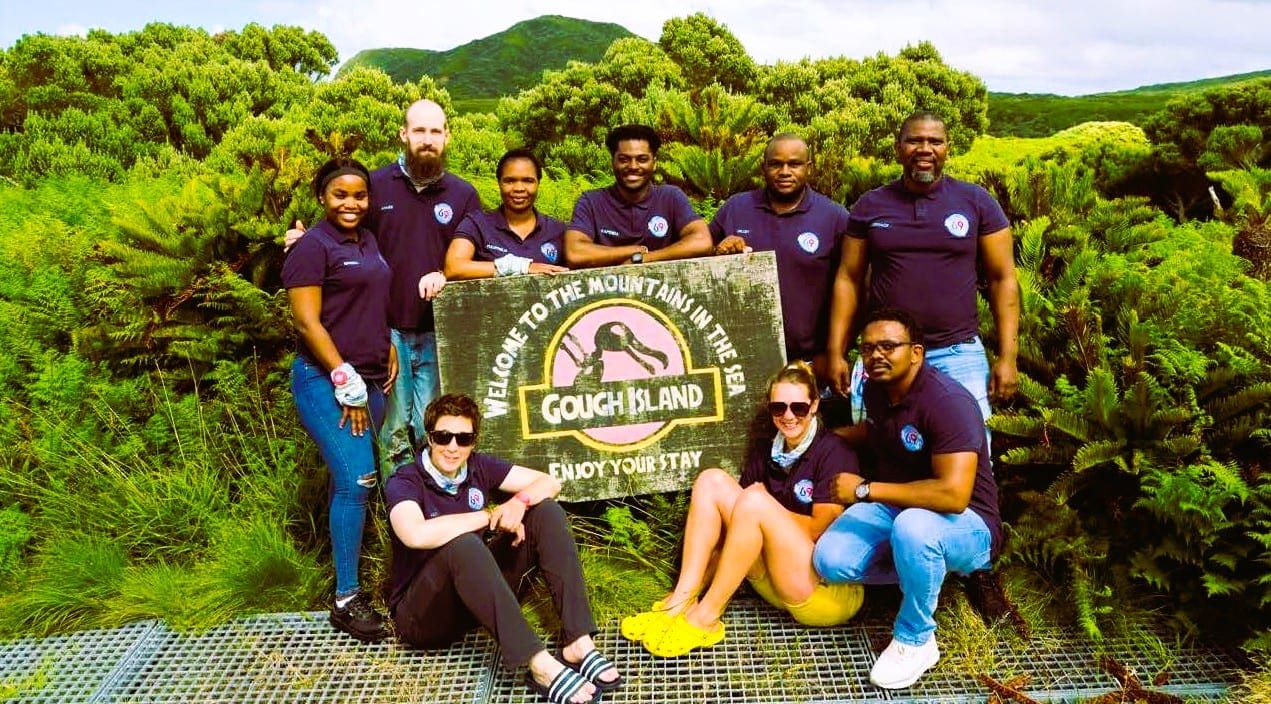 A word form the leader: “it’s my pleasure to reflect on the incredible journey we’ve shared over the past months, experiencing both the beauty and the challenges of this remote island. Overwintering on Gough Island has been an extraordinary adventure. Each of us came to this island with our own motivations and expectations, but we’ve grown together into a cohesive team—a family, really.” – Matshediso Meshack Mogorosi
A word form the leader: “it’s my pleasure to reflect on the incredible journey we’ve shared over the past months, experiencing both the beauty and the challenges of this remote island. Overwintering on Gough Island has been an extraordinary adventure. Each of us came to this island with our own motivations and expectations, but we’ve grown together into a cohesive team—a family, really.” – Matshediso Meshack Mogorosi
 Arrival of vessels on Gough Island’s shores is a momentous occasion, eagerly anticipated by the expedition team due to the island’s extreme remoteness.
Arrival of vessels on Gough Island’s shores is a momentous occasion, eagerly anticipated by the expedition team due to the island’s extreme remoteness.
by Ria Olivier | Aug 28, 2024 | Research, SCAR, Uncategorised
 Well done to all that represented South Africa at XIth SCAR – Open Science Conference & Biennial Meetings in Pucón-Punta Arenas – CHILE during
Well done to all that represented South Africa at XIth SCAR – Open Science Conference & Biennial Meetings in Pucón-Punta Arenas – CHILE during
August 2024.


More posts to follow

by Ria Olivier | Jun 17, 2024 | Uncategorised
 The UN’s Decade of Ocean Science calls for programmes that improve scientific knowledge, develop research capacities and transfer marine technological information and expertise across generations. In South Africa, the Department of Science and Innovation’s (DSI) has already taken a significant step forward in such training measures. The current DSI Global Change Grand Challenge programme1 calls for platforms that “attract young researchers and retain them by exciting their interest in aspects of global change, while developing their capacity and professional skills in the relevant fields of investigation”. To meet these challenges in the Ocean Sciences, SEAmester – South Africa’s Floating University and a joint initiative between Government and Universities was started in 2016. The strength of SEAmester is that South African postgraduate students combine theoretical classroom learning with the application of this knowledge through ship-based, and more importantly, hands-on research through the Agulhas System Climate Array (ASCA) programme.
The UN’s Decade of Ocean Science calls for programmes that improve scientific knowledge, develop research capacities and transfer marine technological information and expertise across generations. In South Africa, the Department of Science and Innovation’s (DSI) has already taken a significant step forward in such training measures. The current DSI Global Change Grand Challenge programme1 calls for platforms that “attract young researchers and retain them by exciting their interest in aspects of global change, while developing their capacity and professional skills in the relevant fields of investigation”. To meet these challenges in the Ocean Sciences, SEAmester – South Africa’s Floating University and a joint initiative between Government and Universities was started in 2016. The strength of SEAmester is that South African postgraduate students combine theoretical classroom learning with the application of this knowledge through ship-based, and more importantly, hands-on research through the Agulhas System Climate Array (ASCA) programme.
 The mid-term goal of SEAmester is to attract and establish a cohort of proficient marine and atmospheric science graduates who will contribute to filling the capacity needs of South African marine science. Furthermore, by involving researchers from across all the relevant disciplines and tertiary institutions in South Africa, SEAmester provides an opportunity to continue building a network of collaborative teaching within the marine field. In doing so, these researchers will foster and strengthen new and current collaborations between historically white and black universities. A core aim of SEAmester will be to transform the number of numerate postgraduate students entering the marine sciences. Within South Africa there continues to be an urgent need to redress the demography of scientists involved in oceanographic research, which remains skewed towards white South Africans. SEAmester has already proven to be extremely effective in responding to these challenges. Since its inception in 2016, over 120 male and 140 female students from 26 tertiary institutes, have been trained onboard the SA Agulhas II. With 64% of the enrolled students being black South African and from previously disadvantaged universities . Greater awareness of the ocean’s physical, biogeochemical and ecological response to climate change, highlighted through ship-board experiences, has already started to inspire and attract students into the marine sciences. This is a critical step if a new generation of marine scientists with a far higher calibre in the sciences are to be trained. Most importantly, SEAmester has already created opportunities for students from all social backgrounds to experience working life at sea. By achieving a more quantitative and experienced input into our postgraduate pipeline, we will, as a scientific community, greatly improve our long-term capabilities to accurately measure, model and predict the impacts of current climate change scenarios. We fully expect this to continue and to ensure that students who excel in numeracy, despite diverse economic, educational, ethnic and social backgrounds, are aware, have equal access to the benefits and opportunities afforded through this programme.
The mid-term goal of SEAmester is to attract and establish a cohort of proficient marine and atmospheric science graduates who will contribute to filling the capacity needs of South African marine science. Furthermore, by involving researchers from across all the relevant disciplines and tertiary institutions in South Africa, SEAmester provides an opportunity to continue building a network of collaborative teaching within the marine field. In doing so, these researchers will foster and strengthen new and current collaborations between historically white and black universities. A core aim of SEAmester will be to transform the number of numerate postgraduate students entering the marine sciences. Within South Africa there continues to be an urgent need to redress the demography of scientists involved in oceanographic research, which remains skewed towards white South Africans. SEAmester has already proven to be extremely effective in responding to these challenges. Since its inception in 2016, over 120 male and 140 female students from 26 tertiary institutes, have been trained onboard the SA Agulhas II. With 64% of the enrolled students being black South African and from previously disadvantaged universities . Greater awareness of the ocean’s physical, biogeochemical and ecological response to climate change, highlighted through ship-board experiences, has already started to inspire and attract students into the marine sciences. This is a critical step if a new generation of marine scientists with a far higher calibre in the sciences are to be trained. Most importantly, SEAmester has already created opportunities for students from all social backgrounds to experience working life at sea. By achieving a more quantitative and experienced input into our postgraduate pipeline, we will, as a scientific community, greatly improve our long-term capabilities to accurately measure, model and predict the impacts of current climate change scenarios. We fully expect this to continue and to ensure that students who excel in numeracy, despite diverse economic, educational, ethnic and social backgrounds, are aware, have equal access to the benefits and opportunities afforded through this programme.
A long-term vision is to develop SEAmester into an international educational flagship programme incorporating a wider participant and scientist list with the involvement of other SADC countries. The success of the past 6 cruises onboard the SA Agulhas II has confirmed to the scientific community that SEAmester – South Africa’s Floating University – is able to achieve just that.
Text Supplied by Prof Isabelle Ansorge
Feature image by Katherine Hutchinson

by Ria Olivier | Apr 29, 2024 | Marion Island, Research, Take-Over Operations, Uncategorised
Marion Island Take-Over 2024 Ornithology Projects: Avian scavengers as indicators of recovery of an island biota and the FitzPatrick long-term monitoring of Albatross and Giant Petrels.
The activities during the take-over 2024 will be divided into (1) completing the activities of the 2021/23 SANAP project on avian scavengers, and (2) ensuring the smooth passing of the FitzPatrick Institute seabird long-term monitoring on to the South African Polar Research Infrastructure (SAPRI).
 ABOVE: Michelle Jones (M80), Vanessa Steven (M81), Prof Susie Cunningham (UCT FitzPatrick PI), Rhiannon Gill (M81), Prof Peter Ryan (UCT FitzPatrick), Chris Jones (M80)
ABOVE: Michelle Jones (M80), Vanessa Steven (M81), Prof Susie Cunningham (UCT FitzPatrick PI), Rhiannon Gill (M81), Prof Peter Ryan (UCT FitzPatrick), Chris Jones (M80)
Avian scavengers as indicators of recovery of an island biota : Since 2021, our SANAP project focussed on the three poorly known avian scavengers: Brown Skua, Kelp Gull, Black-faced Sheathbill, as well as some of the skua’s prey, the burrowing seabird species. Our project filled identified scientific gaps that were crucial for best planning of the mouse eradication and development of appropriate mitigation measures, and established baselines for the scavenger guild and their prey base against which the impact of a successful mouse eradication can be measured in years to come. The takeover 2024 will see the closure of this project that we are aiming to restart at the time of the mouse eradication.

 Above: Chris and Michelle Jones working with the Wandering Albatross during overwinter period
Above: Chris and Michelle Jones working with the Wandering Albatross during overwinter period
The FitzPatrick long-term monitoring of Albatross and Giant Petrels: The long-term demography monitoring of Wandering and Grey-headed Albatrosses and Northern Giant Petrels at Marion Island was started by the FitzPatrick Institute of African Ornithology (UCT) in the early 1980s. To ensure its continuity for years to come, it will become SAPRI’s responsibility from April/May 2024. In the forthcoming takeover, all information regarding the monitoring will be passed on to SAPRI to ensure the continuity in the data collected. Further, the annual whole island count of Grey-headed Albatross fledglings will be conducted and Wandering Albatrosses will be carefully checked to detect any potential mouse injuries that were first detected in breeding adults in April 2023.

 (left) Michelle Jones with Grey-headed Albatross and (right) Chris Jones with Common Diving Petrel
(left) Michelle Jones with Grey-headed Albatross and (right) Chris Jones with Common Diving Petrel
Principal Investigators
Take-Over Research team
Overwintering team 2023/24:
- Michelle Risi Jones (NMU/SAPRI)
- Christopher Jones (NMU)
- Text: Dr Maelle Connan
- Images : Chris and Michelle Jones

by Ria Olivier | Mar 1, 2024 | Uncategorised

 The last session on oceans and marine ecosystems under global change within the Marine and Antarctic Research Strategy research themes was chaired by Tarron Lamont. The session focussed on Physics to Top Predators at islands and seamounts in the Southern Ocean. (Above
The last session on oceans and marine ecosystems under global change within the Marine and Antarctic Research Strategy research themes was chaired by Tarron Lamont. The session focussed on Physics to Top Predators at islands and seamounts in the Southern Ocean. (Above
 Above: Marcel van den Berg, Issufo Halo, Jenny Huggett, Fannie Shabangu
Above: Marcel van den Berg, Issufo Halo, Jenny Huggett, Fannie Shabangu
- T Lamont: Mesoscale eddies influencing the sub-Antarctic Prince Edward Islands: Origin, pathways, and characteristics. (Abstract)
- MA van den Berg: Influence of eddies and fronts on the shelf seas of the sub-Antarctic Prince Edward Islands. (Abstract)
- T Toolsee: The interannual/decadal scale and long-term trends of surface hydrography around the sub-Antarctic Prince Edward Islands. (Abstract)
- I Halo: Surface and subsurface hydrographic variability at the Prince Edward Islands: Perspectives from the high-resolution GLORYS model. (Abstract)
- SA du Preez: Zooplankton variability around the sub-Antarctic Prince Edward Islands and the influence of the environment. (Abstract)
- R Daniels: Killer whale acoustic patterns respond to prey abundance and environmental variability around the Prince Edward Islands, Southern Ocean. (Abstract)
- I Schafer: Acoustic occurrence and behaviour of Baleen Whales during winter around Prince Edward Islands. (Abstract)
- A Sneddon: Marine Heatwave characteristics in the South Atlantic and South Indian Oceans. (Abstract)
- JA Huggett: Towards eco-regionalisation of the eastern subantarctic pelagic zone – mapping zooplankton communities at the Prince Edward Islands. (Abstract)
- FW Shabangu: Rhyming in the cold: Fish calls between two sub-Antarctic Islands, Southern Ocean. (Abstract)
- FW Shabangu: Life near the sea ice edge: Listening for whales off the Maud Rise, Antarctica. (Abstract)
 Above (l-r): Sarah du Preez, Robyn Daniels, Ivana Schafer, Amber Sneddon
Above (l-r): Sarah du Preez, Robyn Daniels, Ivana Schafer, Amber Sneddon

by Ria Olivier | Feb 27, 2024 | Oceanography, Research, SANAP, SANAP Student, South Atlantic, Southern Ocean, Uncategorised


 The second session within the Marine and Antarctic Research Strategy research theme : Oceans and marine ecosystems under global change was chaired by Sandy Thomalla and Sarah Nicholson from Southern Ocean Carbon- Climate Observatory (SOCCO). The session title, “The Southern Ocean’s sensitivity to a changing climate: insights from a seasonal cycle approach” were presented through oral presentations and e-posters from SOCCO. (Left Sandy Thomalla, Right Sarah Nicholson, above SOCCO group photo)
The second session within the Marine and Antarctic Research Strategy research theme : Oceans and marine ecosystems under global change was chaired by Sandy Thomalla and Sarah Nicholson from Southern Ocean Carbon- Climate Observatory (SOCCO). The session title, “The Southern Ocean’s sensitivity to a changing climate: insights from a seasonal cycle approach” were presented through oral presentations and e-posters from SOCCO. (Left Sandy Thomalla, Right Sarah Nicholson, above SOCCO group photo)
 Above (l-r): Tesha Toolsee, Tommy Ryan-Keogh, Thapelo Ramalepe, Thato Mtshali.
Above (l-r): Tesha Toolsee, Tommy Ryan-Keogh, Thapelo Ramalepe, Thato Mtshali.
- Sarah Nicholson: The impact of storms on CO2 and heat exchange across the Southern Ocean.
- Tesha Toolsee: The complex role of storms in modulating intra-seasonal air-sea CO2 fluxes in the sub-Antarctic Southern Ocean.
- Sandy Thomalla: Trends in Southern Ocean Phytoplankton bloom phenology.
- Sifiso Mpapane: Understanding photo acclimation effects on Chl:C ratio in the Southern Ocean: modelling considerations and insights into seasonal assemblage composition. (E-poster)
- Tommy Ryan-Keogh: Multi-decadal trend of increasing iron stress in the Southern Ocean phytoplankton.
- Thapelo Ramalepe: Exploring the seasonal processes governing manganese supply in the Southern Ocean.
- Thato Mtshali: Winter-time distributions and dissolved iron mixed layer budget in the south Atlantic sector of the Southern Ocean.
- Miranda Sitofile: Investigating seasonal variability of dissolved iron in the South Atlantic sector of the Southern Ocean: Insights from the winter and spring SCALE 2019 cruises. (e-poster)
- Lillina Ruiters: Variability of phytoplankton photo physiology in the Southern Ocean: an analysis of assumptions and uncertainties. (e-poster)
 Above(l-r): Sifiso Mpapane, Miranda Sitofile, Lillina Ruiters
Above(l-r): Sifiso Mpapane, Miranda Sitofile, Lillina Ruiters

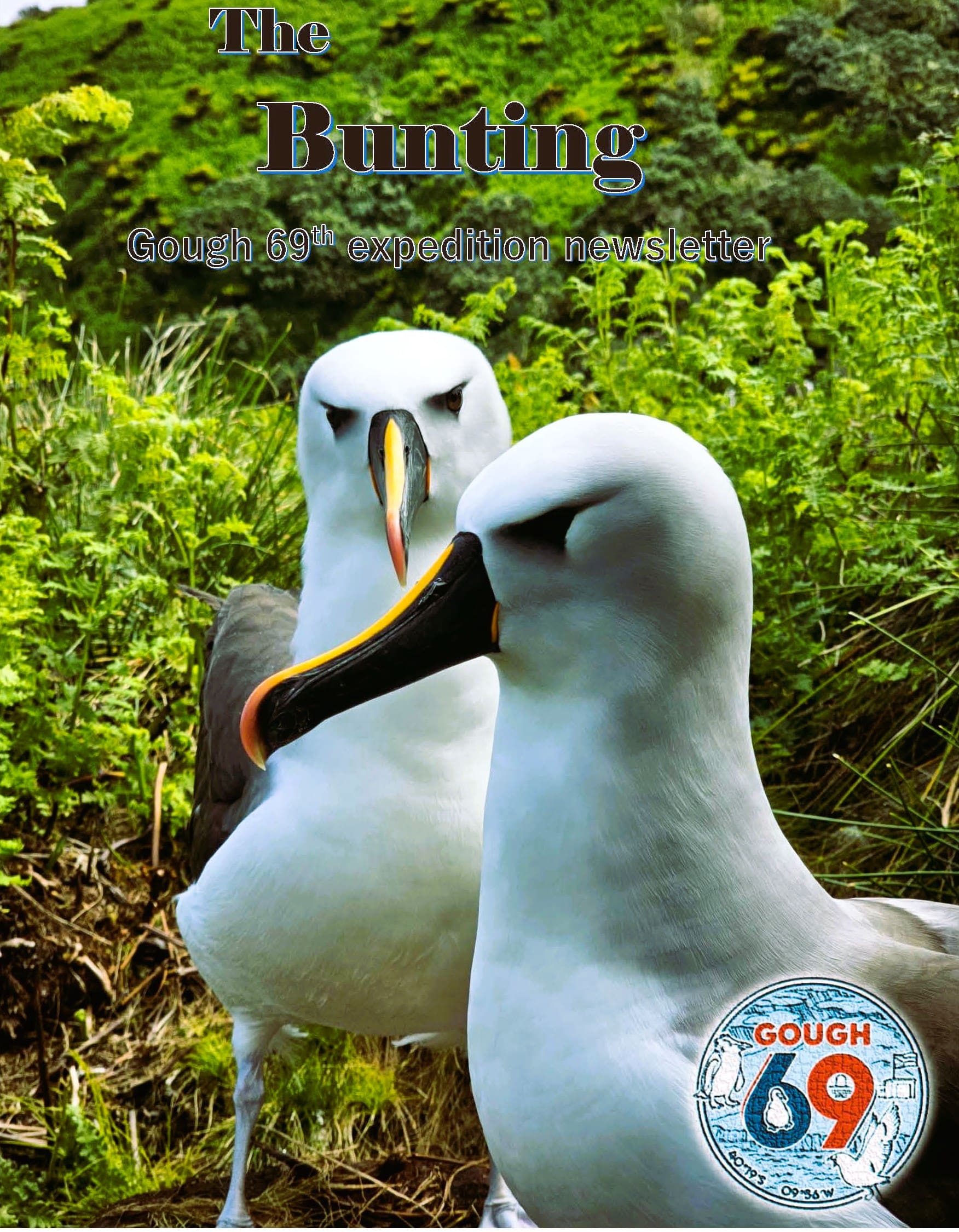 Gough 69 Overwintering team newsletter now available. A bumper issue, you’ll get a glimpse of what life on Gough is like—the team’s unforgettable experiences, their personal growth, and the bonds they formed.
Gough 69 Overwintering team newsletter now available. A bumper issue, you’ll get a glimpse of what life on Gough is like—the team’s unforgettable experiences, their personal growth, and the bonds they formed.  A word form the leader: “it’s my pleasure to reflect on the incredible journey we’ve shared over the past months, experiencing both the beauty and the challenges of this remote island. Overwintering on Gough Island has been an extraordinary adventure. Each of us came to this island with our own motivations and expectations, but we’ve grown together into a cohesive team—a family, really.” – Matshediso Meshack Mogorosi
A word form the leader: “it’s my pleasure to reflect on the incredible journey we’ve shared over the past months, experiencing both the beauty and the challenges of this remote island. Overwintering on Gough Island has been an extraordinary adventure. Each of us came to this island with our own motivations and expectations, but we’ve grown together into a cohesive team—a family, really.” – Matshediso Meshack Mogorosi Arrival of vessels on Gough Island’s shores is a momentous occasion, eagerly anticipated by the expedition team due to the island’s extreme remoteness.
Arrival of vessels on Gough Island’s shores is a momentous occasion, eagerly anticipated by the expedition team due to the island’s extreme remoteness.
 Well done to all that represented South Africa at
Well done to all that represented South Africa at 

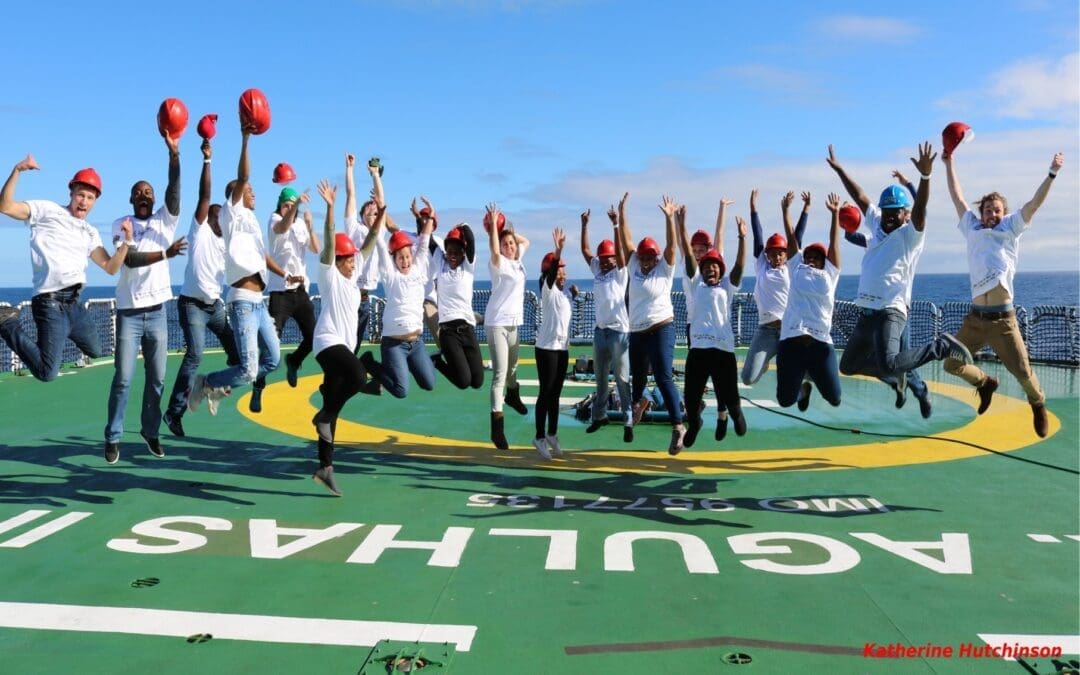
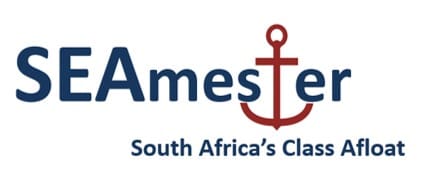 The
The The mid-term goal of SEAmester is to attract and establish a cohort of proficient marine and atmospheric science graduates who will contribute to filling the capacity needs of South African marine science. Furthermore, by involving researchers from across all the relevant disciplines and tertiary institutions in South Africa, SEAmester provides an opportunity to continue building a network of collaborative teaching within the marine field. In doing so, these researchers will foster and strengthen new and current collaborations between historically white and black universities. A core aim of SEAmester will be to transform the number of numerate postgraduate students entering the marine sciences. Within South Africa there continues to be an urgent need to redress the demography of scientists involved in oceanographic research, which remains skewed towards white South Africans. SEAmester has already proven to be extremely effective in responding to these challenges. Since its inception in 2016, over 120 male and 140 female students from 26 tertiary institutes, have been trained onboard the SA Agulhas II. With 64% of the enrolled students being black South African and from previously disadvantaged universities . Greater awareness of the ocean’s physical, biogeochemical and ecological response to climate change, highlighted through ship-board experiences, has already started to inspire and attract students into the marine sciences. This is a critical step if a new generation of marine scientists with a far higher calibre in the sciences are to be trained. Most importantly, SEAmester has already created opportunities for students from all social backgrounds to experience working life at sea. By achieving a more quantitative and experienced input into our postgraduate pipeline, we will, as a scientific community, greatly improve our long-term capabilities to accurately measure, model and predict the impacts of current climate change scenarios. We fully expect this to continue and to ensure that students who excel in numeracy, despite diverse economic, educational, ethnic and social backgrounds, are aware, have equal access to the benefits and opportunities afforded through this programme.
The mid-term goal of SEAmester is to attract and establish a cohort of proficient marine and atmospheric science graduates who will contribute to filling the capacity needs of South African marine science. Furthermore, by involving researchers from across all the relevant disciplines and tertiary institutions in South Africa, SEAmester provides an opportunity to continue building a network of collaborative teaching within the marine field. In doing so, these researchers will foster and strengthen new and current collaborations between historically white and black universities. A core aim of SEAmester will be to transform the number of numerate postgraduate students entering the marine sciences. Within South Africa there continues to be an urgent need to redress the demography of scientists involved in oceanographic research, which remains skewed towards white South Africans. SEAmester has already proven to be extremely effective in responding to these challenges. Since its inception in 2016, over 120 male and 140 female students from 26 tertiary institutes, have been trained onboard the SA Agulhas II. With 64% of the enrolled students being black South African and from previously disadvantaged universities . Greater awareness of the ocean’s physical, biogeochemical and ecological response to climate change, highlighted through ship-board experiences, has already started to inspire and attract students into the marine sciences. This is a critical step if a new generation of marine scientists with a far higher calibre in the sciences are to be trained. Most importantly, SEAmester has already created opportunities for students from all social backgrounds to experience working life at sea. By achieving a more quantitative and experienced input into our postgraduate pipeline, we will, as a scientific community, greatly improve our long-term capabilities to accurately measure, model and predict the impacts of current climate change scenarios. We fully expect this to continue and to ensure that students who excel in numeracy, despite diverse economic, educational, ethnic and social backgrounds, are aware, have equal access to the benefits and opportunities afforded through this programme.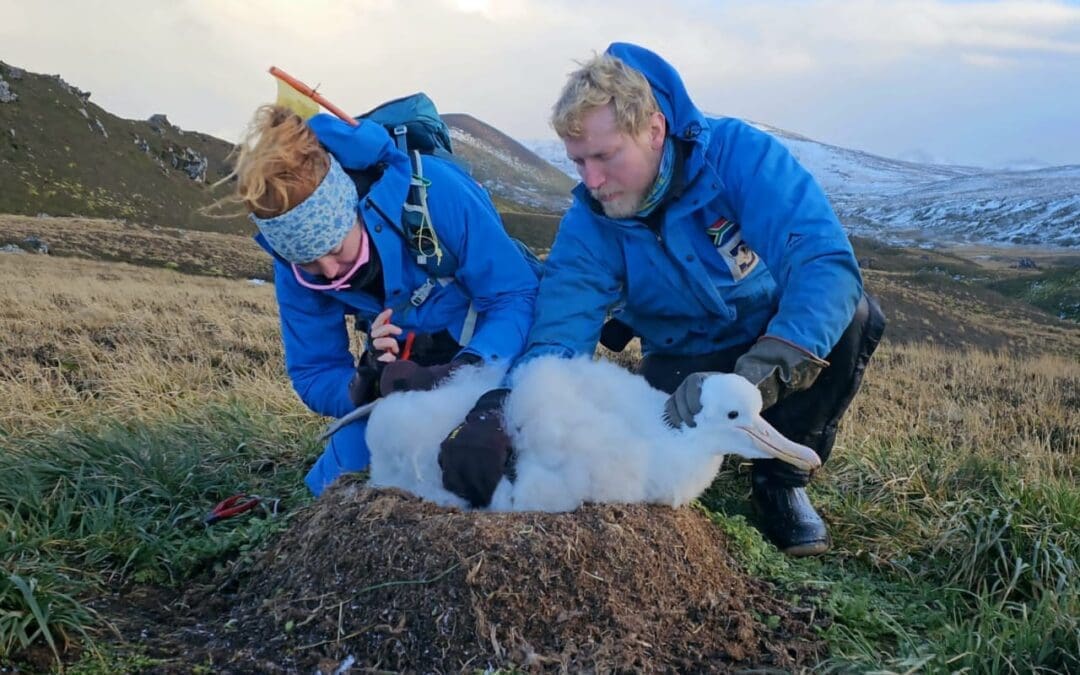
 ABOVE: Michelle Jones (M80), Vanessa Steven (M81), Prof Susie Cunningham (UCT FitzPatrick PI), Rhiannon Gill (M81), Prof Peter Ryan (UCT FitzPatrick), Chris Jones (M80)
ABOVE: Michelle Jones (M80), Vanessa Steven (M81), Prof Susie Cunningham (UCT FitzPatrick PI), Rhiannon Gill (M81), Prof Peter Ryan (UCT FitzPatrick), Chris Jones (M80)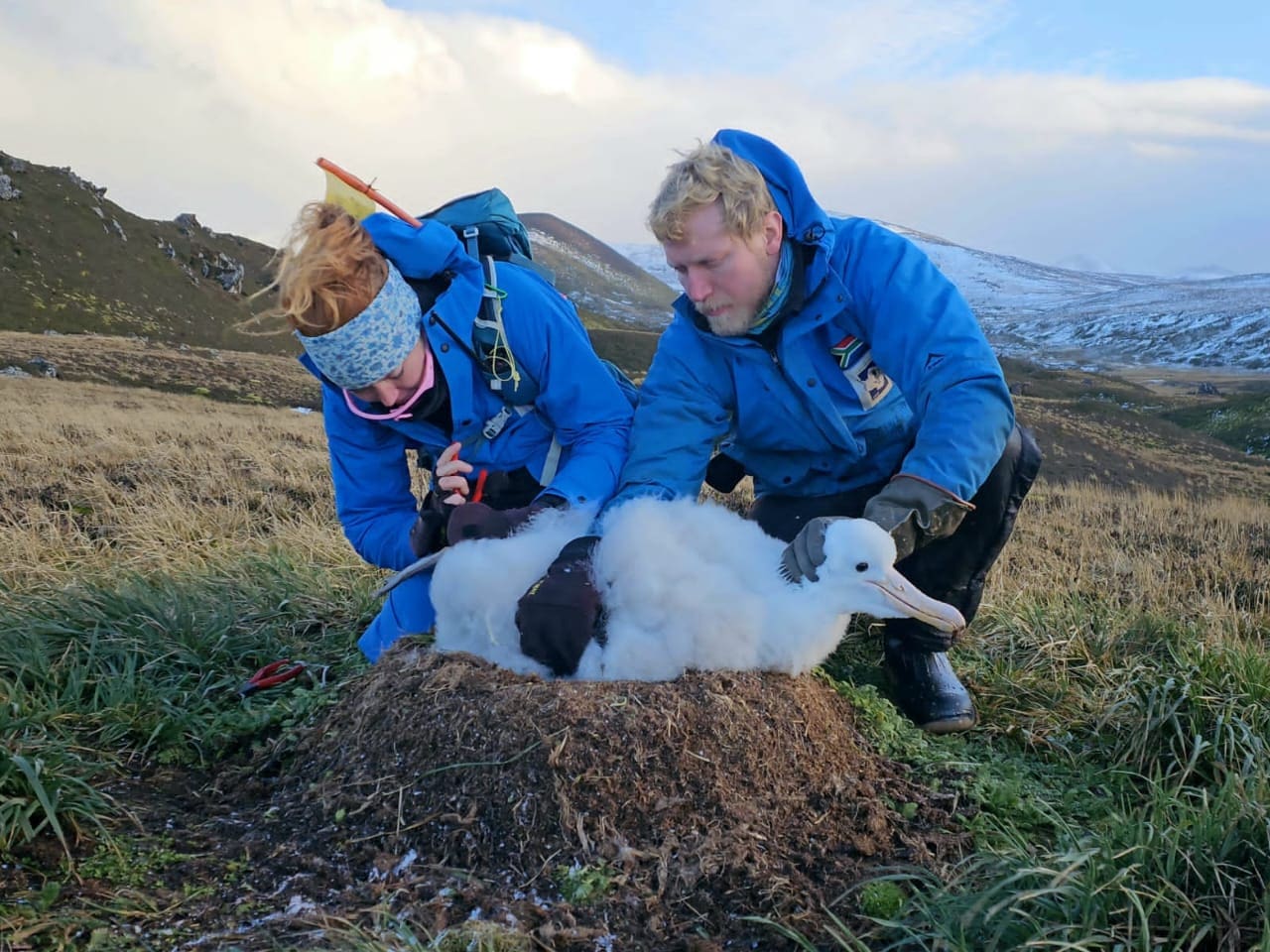
 Above: Chris and Michelle Jones working with the Wandering Albatross during overwinter period
Above: Chris and Michelle Jones working with the Wandering Albatross during overwinter period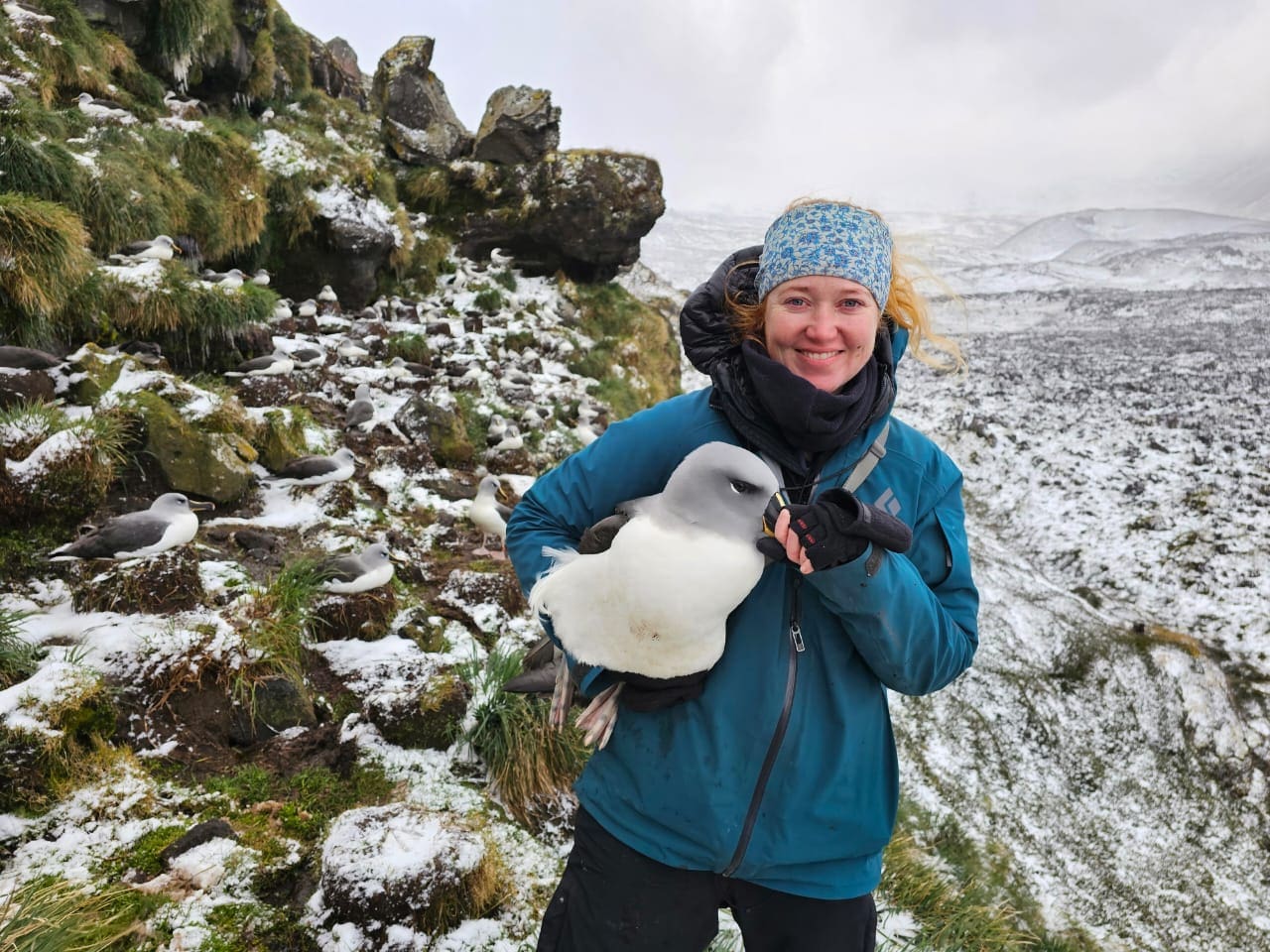
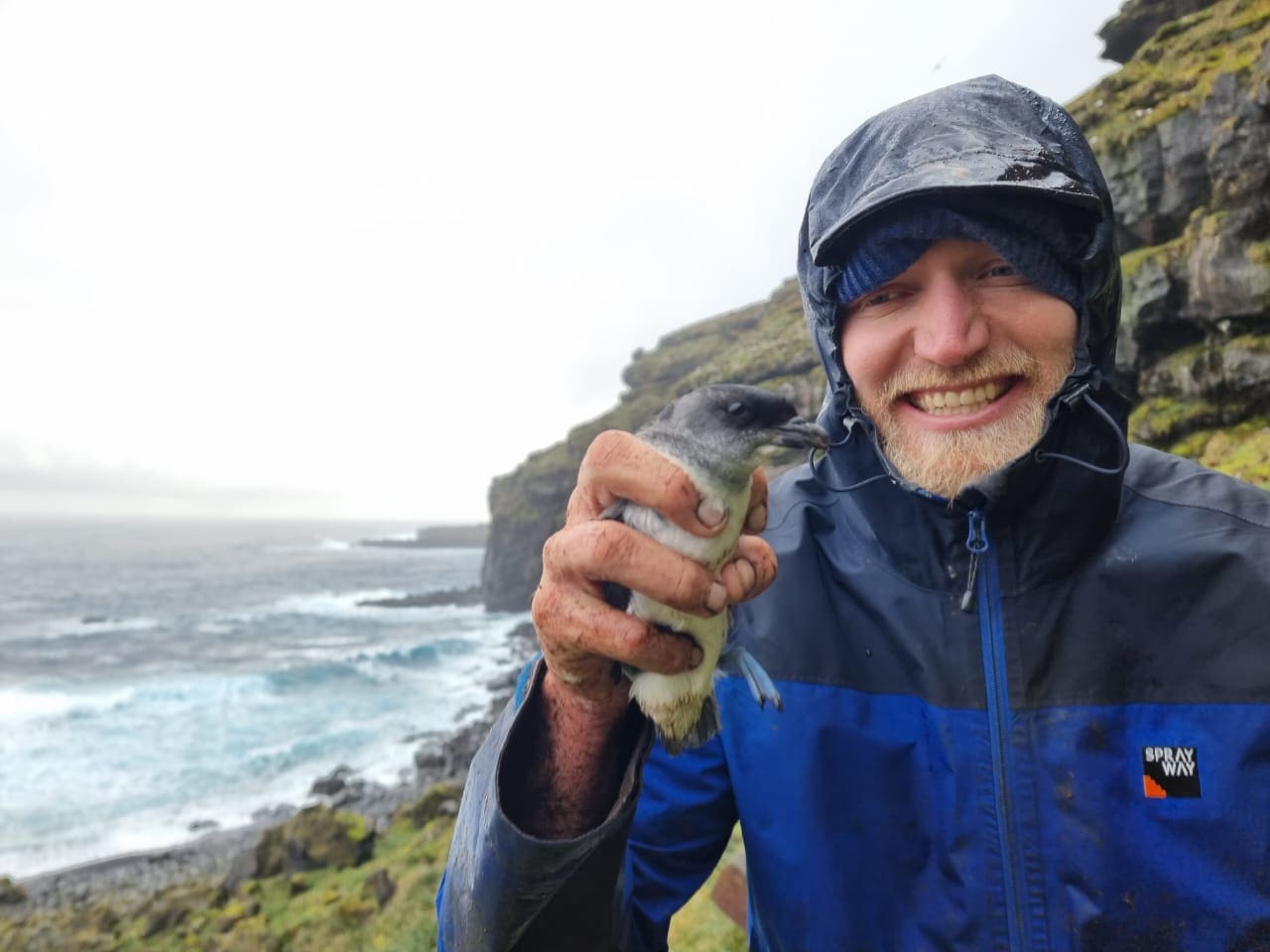 (left) Michelle Jones with Grey-headed Albatross and (right) Chris Jones with Common Diving Petrel
(left) Michelle Jones with Grey-headed Albatross and (right) Chris Jones with Common Diving Petrel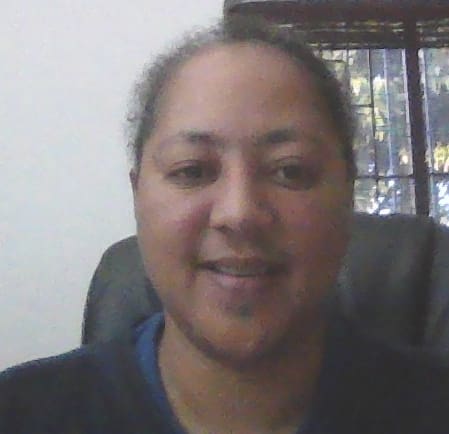
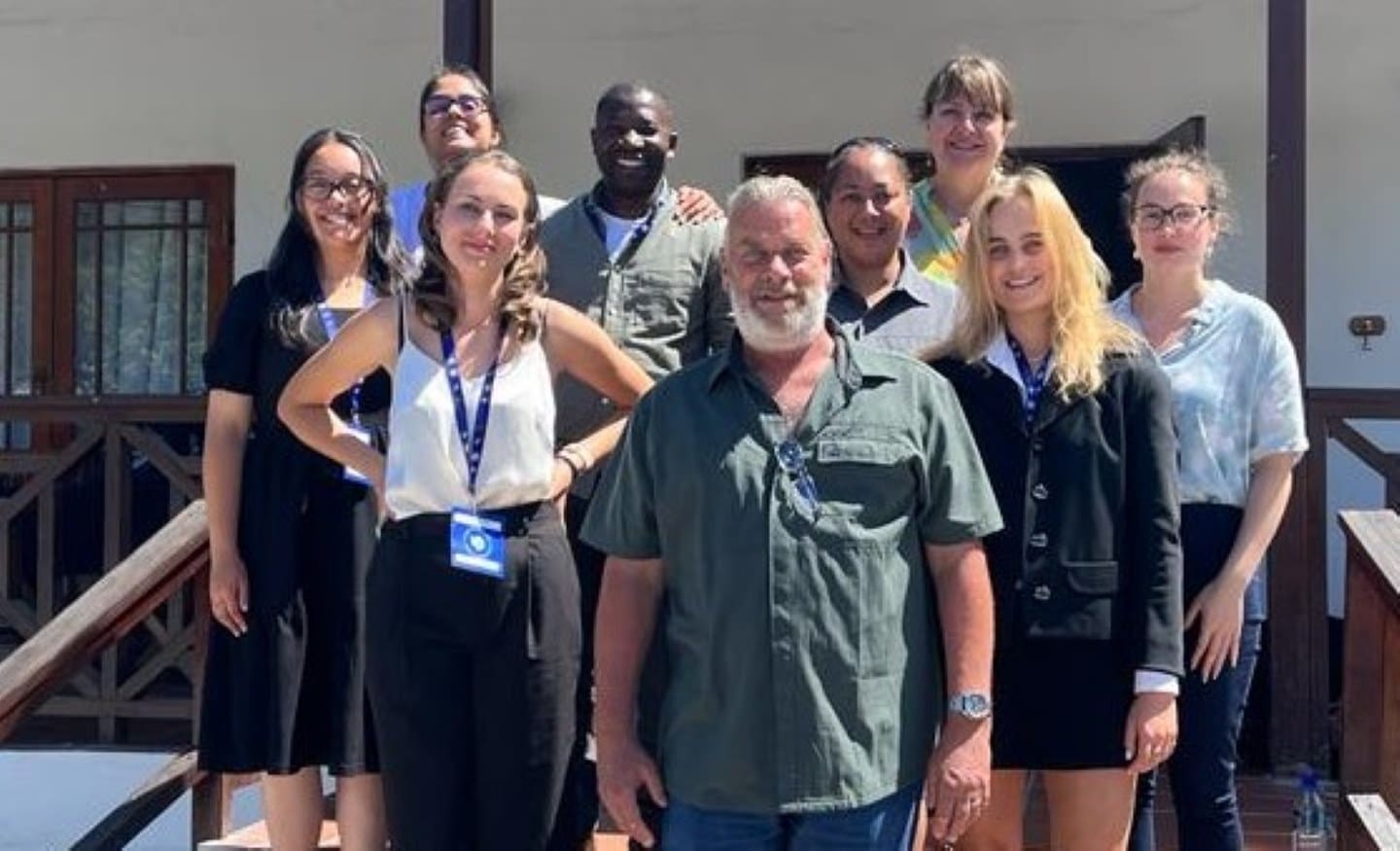
 Above: Marcel van den Berg, Issufo Halo, Jenny Huggett, Fannie Shabangu
Above: Marcel van den Berg, Issufo Halo, Jenny Huggett, Fannie Shabangu Above (l-r): Sarah du Preez, Robyn Daniels, Ivana Schafer, Amber Sneddon
Above (l-r): Sarah du Preez, Robyn Daniels, Ivana Schafer, Amber Sneddon


 The second session within the
The second session within the  Above (l-r): Tesha Toolsee, Tommy Ryan-Keogh, Thapelo Ramalepe, Thato Mtshali.
Above (l-r): Tesha Toolsee, Tommy Ryan-Keogh, Thapelo Ramalepe, Thato Mtshali.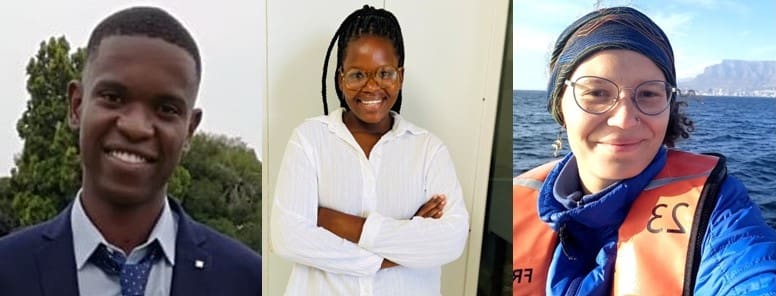 Above(l-r): Sifiso Mpapane, Miranda Sitofile, Lillina Ruiters
Above(l-r): Sifiso Mpapane, Miranda Sitofile, Lillina Ruiters



